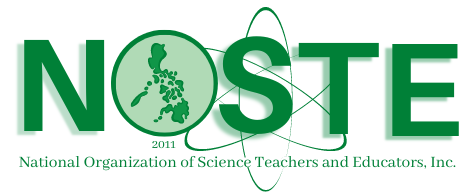Disaster management capability of disaster risk reduction and management council in selected areas in Pangasinan: Basis for a capability enhancement program
Holden Kirby Mandapat VALDEZ
Tandoc National High School
Virgen Milagrosa University Foundation
Corresponding Author’s Email: vholdenkirby@gmail.com
Abstract
This descriptive study determined the disaster management capabilities of Disaster Risk Reduction and Management Council (DRRMC) in Pangasinan in which validated questionnaire was utilized as the data gathering instrument. Specifically, it determined the respondents; disaster management capabilities as to their knowledge and practices on prevention and mitigation, preparedness, response, and rehabilitation and recovery. Statistical Tools used were mean percentage score for the knowledge of the respondents, average weighted mean for the practices of the respondents, and chi-square test for the difference of the knowledge and practices when grouped as to their profiles. Findings revealed that majority of the respondents belong to early adulthood, dominated by married female who are college graduate with a length of service of more than a decade and are from Urdaneta City. The respondents are knowledgeable and always practicing the key activities on disaster management as to prevention and mitigation, preparedness, response and rehabilitation and recovery. Moreover, the profile of the respondents as to age, educational attainment, civil status and length of service established a difference on the knowledge, practice and factors affecting their disaster management. In line with these, it is recommended to provide relevant seminars and extension program to enhance the disaster management capability of the DRRMC.
Keywords: Disaster Risk Reduction and Management Capability, Descriptive study, Luzon, Philippines
References
- Armas, Teddylyn et al (2010). “Emergency Preparedness and Capability of the Community Units in San Carlos City, Pangasinan: Basis for a Plan of Action”. Virgen Milagrosa University Foundation
- Becker, Nicole. “Raising preparedness by risk analysis of post-disaster homelessness and improvement of emergency shelters”. Disaster Prevention and Management: An International Journal. Volume 18, Number 1, pp. 49-54(6), Emerald Group Publishing Limited., 2009.
- Braun, Barbara I. “Integrating Hospitals into Community Emergency Preparedness Planning”. An International Journal. June 2010, p. 799-811.
- Centers for Disease Control and Prevention (2011). Public Health Preparedness Capabilities: National Standards for State and Local Planning.
- Chaput, Christine, Deluhery, Matthew, et. al. “Disaster Training for Prehospital Providers”. 2011
- Edgerton, Ryan. “How to Handle an Emergency Situation”. An International Journal. 2009
- Eriksson, Kerstin. “Knowledge transfer between preparedness and emergency response: a case study”. Disaster Prevention and Management: An International Journal, Volume 18, Number 2, pp. 162-169(8).,Emerald Group Publishing Limited., 2009.
- Gabat, Miriam Lee S. (2014), “Extent of Implementation of Disaster Risk Reduction and Management in Central Pangasinan”. Saint Louis University
- Guevarra, Jonathan (2008). Assessment of Disaster Preparedness in Selected Public High Schools in Luzon, Philippines”. University of the Philippines
- Moghadas, Seyed M., et. Al. “Managing public health crises: the role of models in pandemic preparedness”. Influenza and Other Respiratory Viruses, Volume 3, Number 2, pp. 75-79(5), Blackwell Publishing, March 2010.
- National Disaster Risk Reduction Management Council (NDRRMC) (2011). The National Disaster Risk Reduction Management Plan 2011-2028. Philippines. Retrieved October 28, 2013 from http://www.dilg.gov.ph/PDF_File/resources/DILG-Resources-2012116-420ac59e31.pdf
- Patillo, Marilyn. “Mass Casualty Disaster Nursing Course”. Nurse Educator, p.271.2010
- Roque, Pamela et al (2010).“Emergency Preparedness and Capability of the Community Folks in Barangay Supo, San Carlos City, Pangasinan”. Virgen Milagrosa University Foundation
- Preparedness Training Critical for Emergency Health Workers: Personal, Professional Readiness an Asset. By Kim Krisberg. Published: 06/19/2. Available at: www.medscape.com/viewarticle/558106?rss
- Public Health Nursing. The Role of Public Health Nurses in Emergency Preparedness and Response: A Position Paper of the Association of State and Territorial Directors of Nursing, Volume 25, Number 4, pp. 353-361(9)., Blackwell Publishing., July/August 2010. Available at: http://www.ingentaconnect.com/search/article? title=emergency+preparedness&title_type=tka&y ear_from=1998&year_to=2009&database=1&pa geSize=20&index=81
- Sinha, Abhinav; Pal, D.K., et. Al. “Knowledge, attitude and practice of disaster preparedness and mitigation among medical students”. Disaster Prevention and Management: An International Journal, Volume 17, Number 4, pp. 503507(5).,Emerald Group Publishing Limited., 2009.
